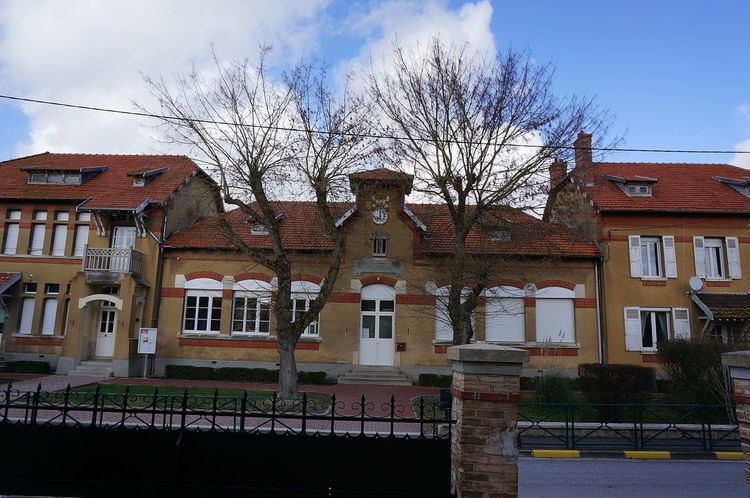Department Aisne Intercommunality Champagne Picarde Area 27.9 km² | Canton Neufchâtel-sur-Aisne Population (2010) 418 Local time Tuesday 8:36 PM | |
 | ||
Weather 4°C, Wind SW at 16 km/h, 81% Humidity | ||
Amifontaine is a French commune in the department of Aisne in the Hauts-de-France region of northern France.
Contents
- Map of 02190 Amifontaine France
- Geography
- Administration
- History
- Demography
- Sites and monuments
- References
Map of 02190 Amifontaine, France
The inhabitants of the commune are known as Amifontenois or Amifontenoisess
Geography
Amifontaine is located some 20 km south-east of Laon and 40 km north-west of Rheims. The Autoroute des Anglais (A25, E17) passes through the western side of the commune from north to south but has no exit in the commune. Access to the commune is by road D52 from Ramecourt in the north-west through the commune to the village and continuing south-east to Prouvais. There is also road D89 from La Malmaison in the north-east through the village to Juvincourt-et-Damary in the south-west. The D24 road also passes through the north of the commune from west to east forming the southern border of a large forested area extending beyond the northern border of the commune. The commune is almost entirely farmland except for the forested area in the north.
La Source a l'Aisne rises north of the village and flows south-west joining La Miette stream which flows south to join the Aisne river near Pontavert.
Administration
List of Successive Mayors of Amifontaine
(Not all data is known)
History
From 8 December 1939 to 16 May 1940 No. 12 Squadron RAF was stationed at an airstrip in Amifontaine. On 12 May 1940 a mission was flown from Amifontaine to destroy two bridges over the Albert Canal. Only one out of five aircraft returned. Flying Officer Garland and Sergeant Gray were both awarded posthumous Victoria Crosses for "most conspicuous bravery".
Demography
In 2010 the commune had 418 inhabitants. The evolution of the number of inhabitants is known through the population censuses conducted in the town since 1793. From the 21st century, a census of municipalities with fewer than 10,000 inhabitants is held every five years, unlike larger towns that have a sample survey every year.
Sources : Ldh/EHESS/Cassini until 1962, INSEE database from 1968 (population without double counting and municipal population from 2006)
